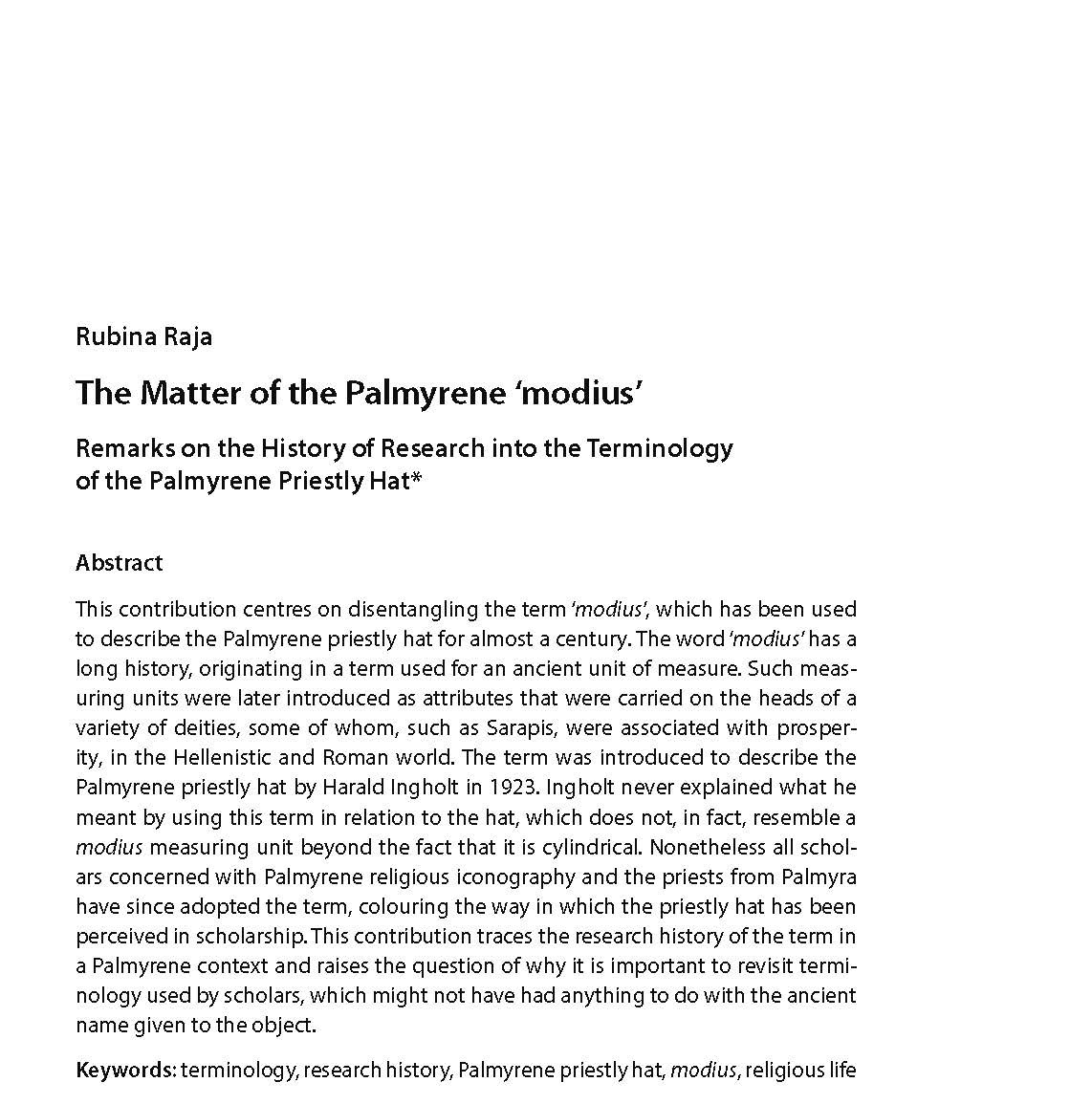Religious Terminology. Religion in the Roman Empire
New publications by Professor and Centre director Rubina Raja.

Raja, R. (2018). "The Matter of the Palmyrene 'modius'. Remarks on the History of Research into the Terminology of the Palmyrene Priestly Hat", in: Raja R. & Rüpke, J. (eds.), Religious Terminology, Religion in the Roman Empire 2:4, Mohr Siebeck, 237-259.
Raja. R. & Rüpke J. (eds.) (2018). Religious Terminology, Religion in the Roman Empire 2:4, Mohr Siebeck.
Raja, R. & Rüpke, J. (2018). "Introduction: Coming to Terms with Ancient Religion", in: Raja R. & Rüpke, J. (eds.), Religious Terminology, Religion in the Roman Empire 2:4, Mohr Siebeck, 157-161.
Abstract (Raja 2018)
This contribution centres on disentangling the term ‘modius’, which has been used to describe the Palmyrene priestly hat for almost a century. The word ‘modius’ has a long history, originating in a term used for an ancient unit of measure. Such meas-uring units were later introduced as attributes that were carried on the heads of a variety of deities, some of whom, such as Sarapis, were associated with prosper-ity, in the Hellenistic and Roman world. The term was introduced to describe the Palmyrene priestly hat by Harald Ingholt in 1923. Ingholt never explained what he meant by using this term in relation to the hat, which does not, in fact, resemble a modius measuring unit beyond the fact that it is cylindrical. Nonetheless all schol-ars concerned with Palmyrene religious iconography and the priests from Palmyra have since adopted the term, colouring the way in which the priestly hat has been perceived in scholarship. This contribution traces the research history of the term in a Palmyrene context and raises the question of why it is important to revisit termi-nology used by scholars, which might not have had anything to do with the ancient name given to the object.
About Religion in the Roman Empire
Religion in the Roman Empire (RRE) is a peer-reviewed journal, which is published three times a year. It intends to further and document new and integrative perspectives on religion in the Ancient World combining multidisciplinary methodologies. Starting from the notion of "lived religion", it offers a space to take up recent, but still incipient, research to modify and cross the disciplinary boundaries of History of Religion, Archaeology, Anthropology, Classics, Ancient History, Jewish History, Rabbinics, New Testament, Early Christianity, Patristics, Coptic Studies, Gnostic and Manichean Studies, Late Antiquity and Oriental Languages.
Rubina Raja is co-founder of RRE.
